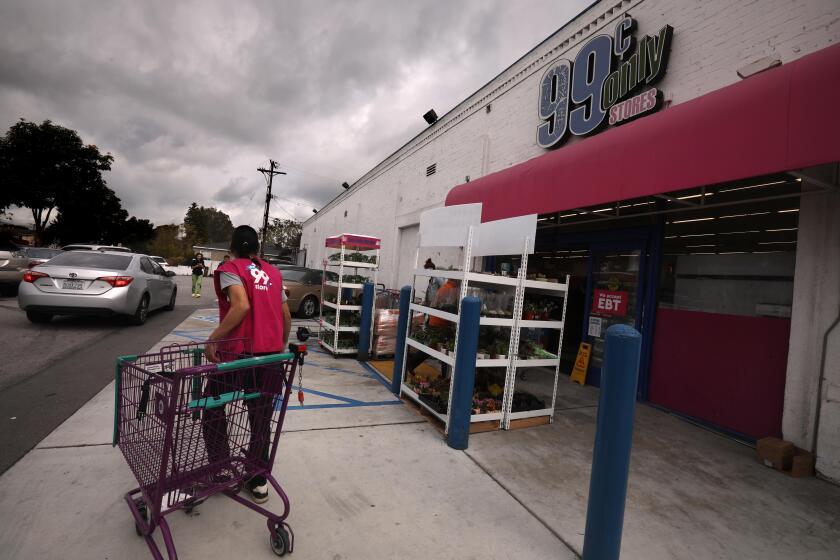When should we start caring about debt?
Today’s topic: When should we start caring about federal deficits? When should we start doing something about them? Dean Baker and Maya MacGuineas continue their debate on the relationship between unemployment rates and economic recovery, and how much Washington can do about both.
Point: Maya MacGuineas, New American Foundation Committee for a Responsible Federal Budget
The federal budget deficit was bad before the recession; now it is downright alarming. In the fiscal year that just ended, the deficit was about $1.4 trillion -- almost a trillion more than the prior year. And reasonable projections are that we will borrow close to $10 trillion more over the next decade.
Does that mean we should start to reduce the deficit this year? No, not at all. The economic recovery is still too fragile to aggressively start pulling money out of the economy, a policy blunder that could derail our anemic growth.
But at the same time, there are signs that markets and creditors could turn against us at any moment. With so much borrowing already under our belt and on the horizon, those who are doing the lending want to know that the United States is still a good place to park their money. And with foreign governments such as China and Brazil increasingly voicing their concern, there is a real worry that creditors might start to demand higher interest rates, an economic scenario that could also reverse the recovery before it has really taken hold.
To balance these competing concerns, Congress and the White House should immediately announce a credible deficit reduction plan that would be phased in gradually, starting a couple of years from now, once the economy is strong enough to accommodate it.
Such a plan would buy us some time to sustain needed borrowing without creating an economic shock. It would also give taxpayers a realistic sense of what will be needed to repay the massive borrowing of past years. With all the talk of making most of President Bush’s tax cuts permanent and creating a federal health insurance program, Americans may not have received the message that taxes must go up and government spending must go down to avoid a fiscal train wreck.
This approach of announcing a deficit reduction plan even while the economy is still on shaky ground has worked successfully around the world. By announcing the plan now, lenders would be reassured that there is not going to be a fiscal crisis in the U.S. Markets can turn on a dime. Interest rates have been extremely low recently, making it easier to bring on a recovery, as quality-conscious lenders from around the world have turned to dollars. But if the perception of quality changes and investors start to flee, it will be much harder to fix the situation after the fact. Better to face up to the hard choices we as a country are going to have to make than to wait for some kind of market crisis that forces us to make them.
Clearly, the borrowing path the U.S. is on is unsustainable. Much like the stock market and housing bubbles of recent years, the massive government debt bubble cannot continue forever.
Counterpoint: Dean Baker, Center for Economic and Policy Research
Maya, it is always dangerous to make policy based on the financial markets’ perceptions of good policy -- or, even worse, our perceptions of the financial markets’ perceptions. Remember, the big actors in financial markets were just fine with both the stock market and housing bubbles. They would have wrecked their banks, in addition to wrecking the economy, had they not been able to tap the U.S. Treasury Department and Federal Reserve for hundreds of billions of dollars in below-market loans. We should be trying to design good policy, not guessing what goes through the minds of the wizards of Wall Street.
Because we are still far below levels of debt that the United States has sustained in the past, we should not worry that the country cannot support its debt burden. The peak was reached after World War II, when the debt was more than 110% of the U.S. gross domestic product, or $15.5 trillion in today’s economy. Far from being a burden on future generations, we enjoyed rapid rises in living standards over the three decades that followed World War II.
It is also important to note that the Wall Street horror story of a decline in the value of the dollar in world currency markets is actually a necessary and desirable outcome. The overvalued dollar has made our exports uncompetitive and has led to a flood of cheap imports. In fact, it was a main cause of the imbalances that fueled the housing bubble.
If the dollar dropped in value against the Chinese yuan and other major currencies, it would lead to a reduction in our trade deficit. In fact, such a decline is actually an official policy goal of the Obama administration and was one for the Bush administration. Both demanded that China stop “manipulating” its currency by keeping the yuan undervalued relative to the dollar.
It is important to clarify an important misconception about the stimulus and where the economy sits right now. It is often said that most of the stimulus has not yet been spent. This is true, but it is misleading.
Think of it this way: Suppose my rich uncle tells me that he will give me $2,400 over the next two years in payments of $100 a month. At first I may not change my spending much, maybe because I’m not sure that my uncle will keep his promise. After three or four months, I would probably recognize that the money will keep coming and would adjust my spending accordingly.
My monthly spending would reach its peak around, say, the sixth month, even though I will have received only one-fourth of the total money promised. This is where we stand now with the stimulus; we have already gotten pretty much the full lift from the package. The stimulus will remain in place through 2010, but it will be providing no additional boost in demand in future quarters compared to what it has already done, just as my spending will not increase in the seventh month that I get my uncle’s check compared to the sixth.
The unemployment projections from the Congressional Budget Office fully incorporate the predicted effect of the stimulus. If we say that it’s OK to start reducing the deficit in 2011, when the CBO projects a 9.1% unemployment rate, then we are saying that this unemployment rate is fine and we can even live with a higher one. Even for 2012, the CBO is projecting a 7.7% unemployment rate, a level far higher than we ever reached in the last recession, and also far higher than the level that prompted the first stimulus in the winter of 2008. This view might be old-fashioned, but ordinary workers and their children should not be forced to suffer because of the incompetence of the geniuses who manage the economy and run Wall Street banks.
More to Read
A cure for the common opinion
Get thought-provoking perspectives with our weekly newsletter.
You may occasionally receive promotional content from the Los Angeles Times.






